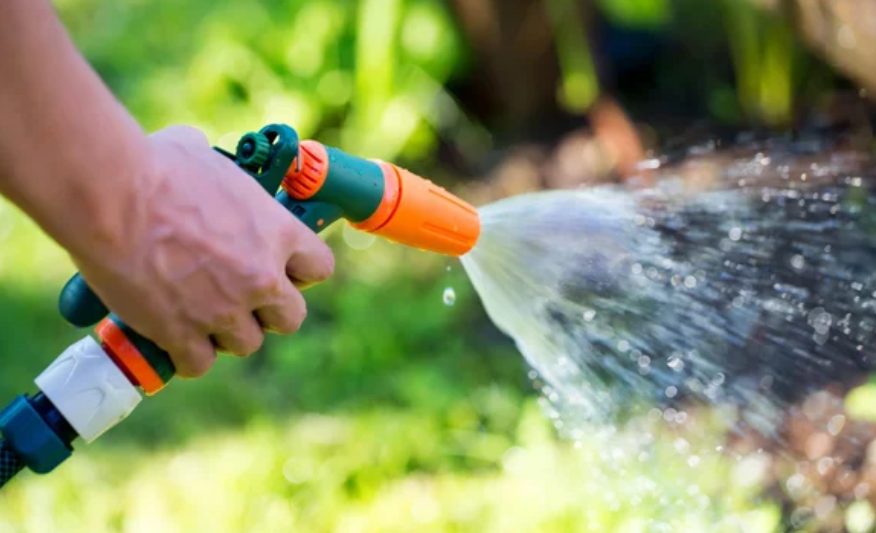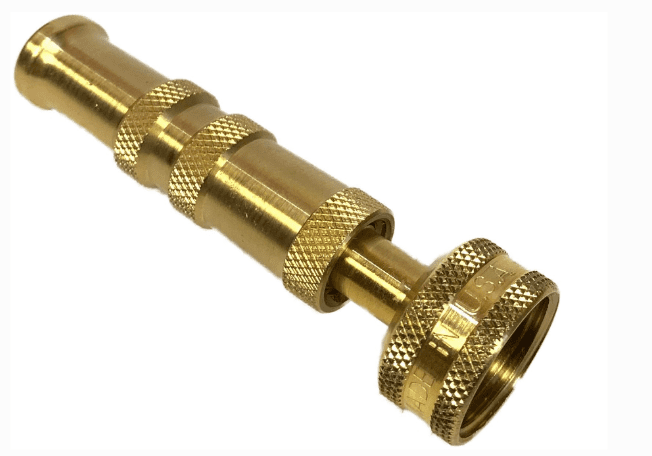
What features should I look for in a high-quality hose nozzle?
There are several features to consider when looking for a high-quality hose nozzle. Look for adjustable spray patterns, durable construction materials such as metal or brass, an ergonomic design for comfortable grip, and a nozzle with a shut-off valve for easy water flow control.
A hose nozzle, a quintessential tool in various household and professional applications, attaches to a garden hose, allowing the user to easily control and direct the water flow. Whether it’s for tending to the delicate blossoms of a garden, removing stubborn dirt from a car, or power-washing a patio to restore its pristine look, selecting the proper nozzle is paramount.
The consequences of choice are palpable: while the proper nozzle can ensure efficiency and safety, a poor selection can lead to wasted water, damage to plants or surfaces, and increased labor.
The distinction, therefore, between a well-chosen nozzle and an ill-fitted one can spell the difference between a job well done and unintended complications.
Finding the Best Hose Nozzles: A Step-by-Step Guide
-
Identify Your Needs:
- Begin by pinpointing the primary tasks for which you’ll be using the hose nozzle. Are you primarily watering plants, washing cars, or cleaning surfaces? Your specific needs will determine the type of nozzle best suited for the job.
-
Research Different Types:
- Familiarize yourself with the different types of hose nozzles available in the market. Some popular varieties include:
- Pistol grip
- Dial (or turret)
- Fan
- Fireman style
- Soaker
- Wand or water wand
- Familiarize yourself with the different types of hose nozzles available in the market. Some popular varieties include:
-
Check the Material:
- Opt for durable materials that can withstand regular use and changing weather conditions. Common materials include solid brass, stainless steel, aluminum, and high-quality plastics.
-
Evaluate the Spray Patterns:
- Ensure the nozzle offers the spray patterns required for your tasks. For example, a mist setting is gentle for delicate plants, while a jet stream is effective for hard surface cleaning.
-
Consider Pressure Adjustment:
- It’s beneficial to have a nozzle with adjustable pressure settings. This feature will allow you to control the water force, preventing potential damage to surfaces or plants.
-
Examine Ergonomics:
- Since you might hold the nozzle for extended periods, ensure it has a comfortable grip. Look for features like cushioned handles or designs that reduce hand fatigue.
-
Inspect the Seal Quality:
- A suitable hose nozzle should have quality seals to prevent leaks. Check if the nozzle comes with washers or o-rings and if replacements are easily available.
-
Read Reviews:
- Before making a purchase, check online reviews on Best Hose Nozzles and customer feedback. Reviews can provide insights into the nozzle’s performance, durability, and potential issues.
-
Ask for Recommendations:
- Reach out to friends, family, or neighbors who might have experience with hose nozzles. Personal recommendations can be invaluable.
-
Determine Your Budget:
- While you don’t need to break the bank for a hose nozzle, avoid going for the cheapest option without considering its quality. Set a reasonable budget and aim for the best value within that range.
-
Visit a Store:
- Head to a local hardware or gardening store to see the nozzles in person if possible. This lets you feel the grip, test the mechanisms, and ask store personnel questions.
-
Test Your Choice:
- Once you’ve purchased it, test the nozzle with your hose to ensure it fits well and operates as expected. Remember, a good fit will prevent leaks and ensure optimal water flow.
-
Store Properly:
- After each use, drain the nozzle of any remaining water and store it in a cool, dry place to extend its lifespan.
If You go over these steps, you can be confident in your choice and ensure that your selected hose nozzle will serve you effectively for years.
Tips and Tricks for Using and Maintaining Hose Nozzles
-
Avoid over-tightening:
- When attaching the nozzle to a hose, ensure it’s snug but avoid over-tightening, which can damage the threads or seals.
-
Regular Cleaning:
- Periodically clean your nozzle to remove debris or mineral buildup, especially if you have hard water. A simple soak in vinegar can help dissolve mineral deposits.
-
Lubricate Moving Parts:
- If your nozzle has moving parts or adjustable settings, lubricate them occasionally with silicone-based lubricants to keep them operating smoothly.
-
Winter Precautions:
- In freezing climates, always disconnect and drain the nozzle after use to prevent water inside from freezing and expanding, which can damage the nozzle.
-
Use a Rubber Washer:
- Always use a rubber washer at the connection point to the hose. This simple addition can prevent many common leaks.
-
Regular Inspections:
- Periodically check your nozzle for signs of wear, especially the seals. Replacing a worn-out seal can extend the life of the nozzle.
-
Soft Water:
- If possible, use soft water with your hose and nozzle. Hard water can lead to mineral buildup, affecting the nozzle’s performance.
-
Avoid Dropping:
- While many nozzles are robust, repeated drops onto hard surfaces can lead to dents or damage, especially for those made of metal.
-
Match Hose and Nozzle Sizes:
- Ensure that the diameter of your hose matches the nozzle size. This guarantees optimal water flow and pressure.
-
Store in Shade:
- If stored outside, try to keep the nozzle in a shaded area to prevent UV damage, especially for nozzles made of plastic or rubber.
-
Spare Washers:
- Keeping a few spare rubber washers on hand is a good idea. They’re inexpensive and can quickly fix a leaky connection.
-
Avoid Chemicals:
- When cleaning your nozzle, avoid harsh chemicals that can corrode or damage the material, especially if made of metal.
Price vs. Quality: Navigating the Balance in Purchasing Decisions
Consumers’ everyday dilemma is the tug-of-war between price and quality when faced with a purchasing decision. These two factors, while interrelated, do not always align straightforwardly. Here’s a breakdown of the relationship between price and quality and some insights to help make informed choices.
- Not Always Proportional:
- A higher price doesn’t always equate to better quality. Brands sometimes hike prices based on their reputation, packaging, or marketing hype rather than the product’s value.
- Initial Investment vs. Long-term Value:
- While quality products might come with a higher initial cost, they often provide better longevity and performance. This can lead to cost savings in the long run as replacements or repairs might be less frequent.
- Diminishing Returns:
- There’s often a point where, even as the price continues to rise, the increase in quality becomes marginal. Recognizing this “sweet spot” can lead to smarter purchasing decisions.
- Intended Use:
- Consider the intended use of the product. Opting for a lower-priced option might make sense for items that are used infrequently or are disposable. Conversely, investing in quality is prudent for daily-use items or those essential for crucial tasks.
- Brand Reputation:
- Established brands often command higher prices due to their reputation. However, it’s worth noting that many lesser-known brands offer comparable quality at a fraction of the cost.
- Research is Key:
- Leveraging online reviews, ratings, and product comparisons can help discern whether a higher price is justified by superior quality.
- Warranties and Guarantees:
- A quality product often comes with a robust warranty or guarantee. This reflects the manufacturer’s confidence in the development and provides financial protection for the consumer.
- Total Cost of Ownership:
- Consider additional costs such as maintenance, accessories, or potential repair fees when evaluating price and quality. A cheaper product that requires frequent maintenance or replacements might become more expensive over its lifespan.
- Emotional Satisfaction:
- The psychological aspect of owning a high-quality product, the satisfaction, pride, or status it offers, is a factor worth considering, even if it doesn’t directly correlate with the product’s functional value.
- Economic Considerations:
- At times, budget constraints might dictate choices. In such cases, it’s essential to prioritize needs and seek the best quality within the given price range.
Conclusion
The seemingly simple act of selecting an appropriate hose nozzle carries significant weight, as the right choice can profoundly influence the outcome of various tasks, from nurturing a garden to efficient home maintenance.
A hose nozzle is an indispensable tool for many homeowners and gardening enthusiasts. Modern iterations of these devices have evolved in design, offering varying functionalities based on user needs. A crucial component in many models is the lever, allowing users to control the water’s flow and pressure easily.
Numerous YouTube tutorials demonstrate the intricacies of using this lever effectively, ensuring that plants receive adequate water without exerting much force that might damage them.
Another often-overlooked but essential part of a hose nozzle is the gasket. This component ensures a tight seal between the hose and the nozzle, preventing leaks and ensuring efficient water flow.
Without a properly functioning gasket, users may be wasting water, especially in regions like North America, where water conservation is crucial.
To get the best out of your hose nozzle, it’s vital to understand its various components and their functions. Whether you’re a seasoned gardener or a newbie, it’s always a good idea to revisit basics, and platforms like YouTube offer a plethora of information to enhance your gardening skills.
Whether preserving the beauty of delicate blooms or ensuring a powerful wash for your patio, the correct nozzle is an unsung hero, ensuring precision, efficiency, and effectiveness. Adhering to the outlined steps simplifies decision-making and guarantees a worthy purchase.
This commitment to making an informed choice ensures that the tool in your hand matches your task at heart, optimizing both effort and resource usage. Investing time in understanding and acting on these guidelines is a pledge to excellence, guaranteeing that every droplet of water serves its intended purpose to the best possible degree.
Hose Nozzle We recommend
Orrco Brass Hose Nozzle
For a hassle-free experience and a top-performing tool, check out the Orrco Brass Hose Nozzle. They made this product in the U.S.A., which means it meets high quality and performance standards.
Unlike plastic nozzles that can crack or leak, the Orrco Brass Hose Nozzle is made of solid brass that can withstand high water pressure and resist corrosion. Depending on your needs, the nozzle has an adjustable spray pattern ranging from a fine mist to a powerful jet.
You can use it for watering plants, washing your car, cleaning your patio, and more. The Orrco Brass Hose Nozzle is easy to attach and detach from any standard garden hose and has a rubber grip that prevents slipping.
A lifetime warranty also backs the nozzle, so you can rest assured that you are making an excellent investment. The Orrco Brass Hose Nozzle is a versatile and dependable tool that can help you with various tasks around your home and garden.
Order yours today and enjoy the benefits of a quality-made product.
Last update on 2024-11-21 / Affiliate links / Images from Amazon Product Advertising API






































